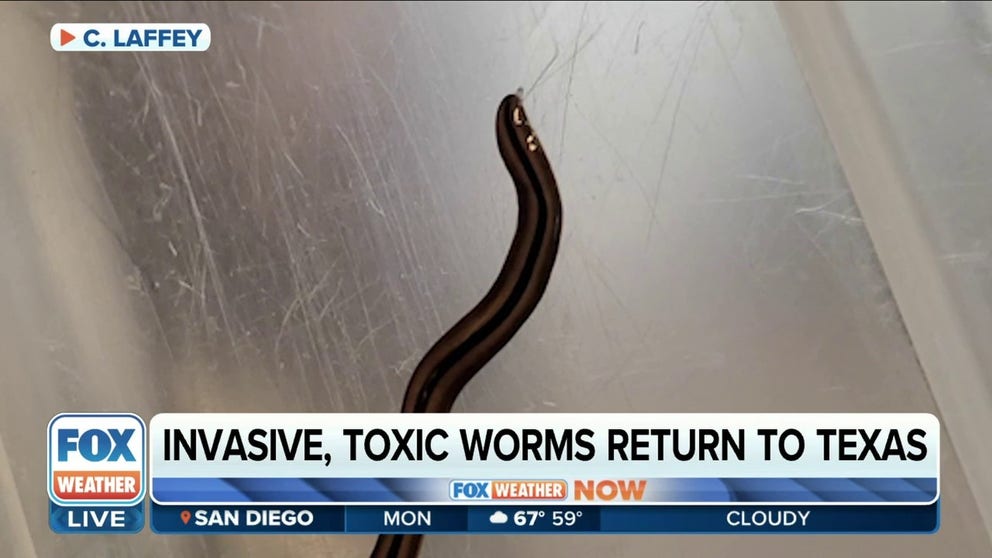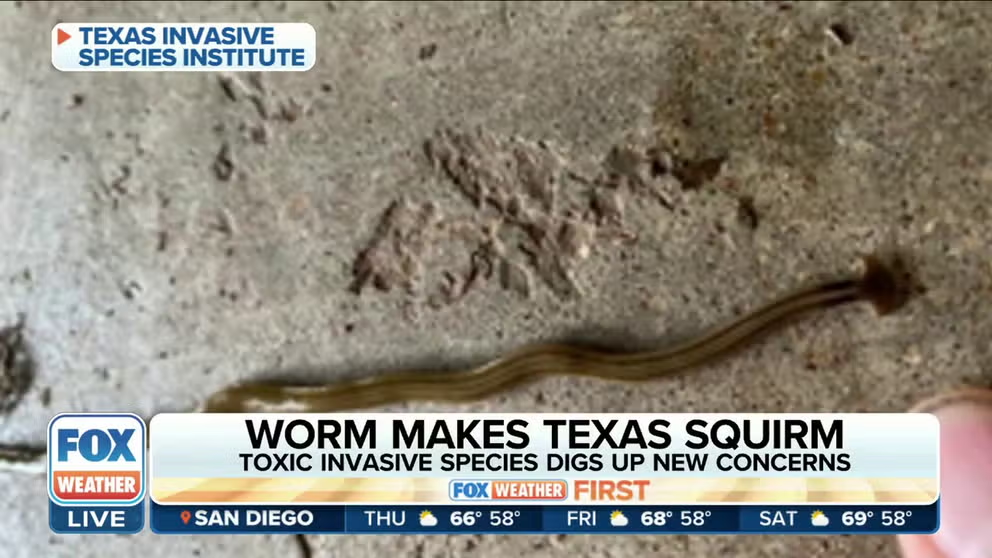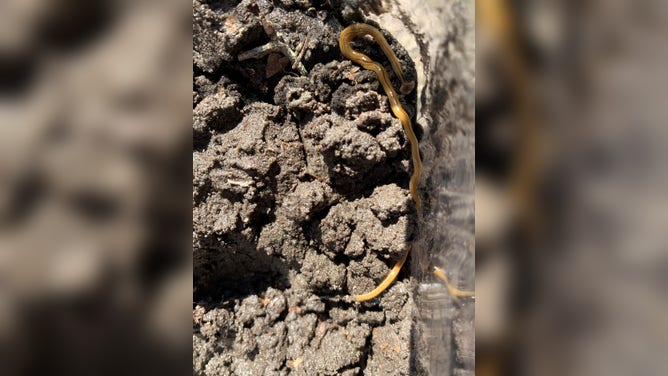Toxic, invasive worms add to potential problems plaguing Houston area due to excessive rainfall
The light or honey-colored snake-like flatworms can grow up to 15 inches long and secrete chemicals through their skin that can be dangerous to humans and pets. They can also carry parasites.
'It does not belong here': Invasive, toxic worms return to Texas
Director of Research and Education for the Texas Invasive Species Institute Ashley Morgan-Olvera on the threats hammerhead flatworms pose. (Video from May 2023)
HOUSTON – It’s been a tough few months across the Houston metro between a deadly derecho, historic river flooding in May and Hurricane Beryl in July, and now residents have one more thing to potentially worry about due to the excessive precipitation – invasive worms.
Enter the hammerhead flatworm, named for its – you guessed it – head that’s shaped like a hammerhead shark but rounded.

The Texas Invasive Species Institute says it is receiving reports of sightings of an invasive species of flatworms that are not only toxic to some animals but are predators to some worms.
(Texas Invasive Species Institute / FOX Weather)
These light or honey-colored snake-like flatworms can grow up to 15 inches long and secrete chemicals through their skin that can be dangerous to humans and pets. They can also carry parasites.
So, why are residents in Texas being warned to be on the lookout for these pests?
The Texas Invasive Species Institute (TISI) says they emerge from their hiding spots after heavy rain and can be found in the soil or on driveways, patios and sidewalks.
Texas continues to be slammed by torrential rain and thunderstorms, which have caused rivers and streams to overflow and even turned some yards into lakes. This could lead to more people spotting the invasive species.
INVASIVE, TOXIC WORMS ARE BACK IN TEXAS DUE TO RECENT RAINS, SUMMERLIKE WARMTH
Invasive, toxic worm species thrives in warm, wet climate of Texas
The Texas Invasive Species Institute says it is receiving reports of sightings of an invasive species of flatworms that are not only toxic to some animals but are predators to some worms. Ashley Morgan-Olvera, Research Director at the Texas Invasive Species Institute, joined FOX Weather to talk more about this worm species. (Video from May 2023)
The hammerhead flatworm (Bipalium kewense) is believed to have been brought to the U.S. on plants from Asia and has been in the country for well over 100 years.
The TISI says they prefer hot, humid climates and usually spend their time under shrubs and out of the sun. They also like to hang out under leaves, rocks and logs, and you may even see one under a dripping faucet.
"They live where earthworms live, so with the heavy rains, they tend to get flushed out," said Ashley Morgan-Olvera, the research director at the Texas Invasive Species Institute in a FOX Weather interview in 2023.
Here's where the problem lies, though.
MEXICAN FRUIT SENT PACKING AFTER BORDER PATROL FINDS RARE BEETLE
The chemicals they secrete through their skin to aid in the digestion of earthworms are toxic. If humans or pets come into contact with that chemical, it can cause skin irritation and even health issues if it is consumed.
So it's extremely important to take the proper precautions if you see one and need to dispose of it.
The TISI says that gloves, paper towels or a stick should be used when handling live hammerhead flatworms. Hands should be washed immediately in warm, soapy water and rinsed in alcohol or hand disinfectant.
In addition, the worms can be killed with orange essence (citrus oil) and salt – the same as with slugs and snails.
They can also be sprayed with citrus oil and vinegar, or just vinegar alone, which must be applied directly to the worm. It's also recommended that they be placed into a plastic bag that can be sealed with salt or vinegar so they don't crawl away after treating it.
It's also important to note that you can't kill the worm by cutting it up. The hammerhead flatworm can regenerate.
"So, if you cut them up into three pieces, it’ll become three new flatworms," Morgan-Olvera said. "So, that’s why we want you to make sure that when you remove them, it’s in a closed container, to make sure they can’t leave and populate."




